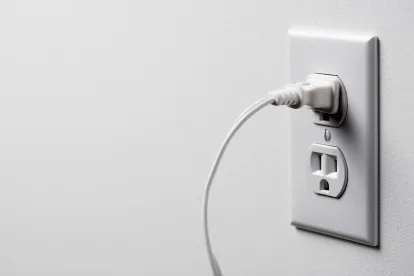The 5-4 decision temporarily blocks further execution of the EPA’s new plan to cut carbon emissions from existing power plants.
On February 9, the US Supreme Court handed a potentially significant defeat to the Obama administration’s Clean Power Plan (CPP) regulations by staying the CPP’s implementation until court challenges to the plan’s legality conclude. The controversial plan seeks to slash carbon emissions from existing power plants by nearly a third in the coming decades through a wide-ranging effort to substitute new low-emission resources, such as wind and solar, for more traditional coal-based generation. Those challenging the CPP maintain that, in seeking to work such a fundamental change in the United States’ energy generation fleet, the US Environmental Protection Agency (EPA) has far exceeded the powers given to it under the Clean Air Act (CAA). The Supreme Court’s granting of a stay of the regulations comes after the US Court of Appeals for the District of Columbia (DC Circuit) rejected a similar request and comes over the Obama’s administration’s opposition, as well as that of some supporting states and industry participants. The decision signals that at least five members of the Supreme Court found the challengers’ arguments more convincing at this stage of the proceedings.
The Clean Power Plan
The EPA’s CPP emerged from President Barack Obama’s 2013 presidential memorandum that directed the EPA to use section 111(d) of the CAA to develop regulations that reduce carbon emissions from existing power plants. CAA section 111(d) permits the EPA to establish the emission standard for source categories in each state based on “the best system of emission reduction that . . . has been adequately demonstrated.” Formally published in October 2015, the CPP targets two existing electricity sources: coal-fired power plants and natural gas combined-cycle power plants.
The CPP aims to reduce carbon emissions in this sector by 32% from 2005 levels by 2030. The plan is grounded in large part on the proposition that the “best system of emission reduction” (BSER) under the CAA includes three elements: (1) increasing the operational efficiency for coal-fired plants, (2) shifting generation from coal to natural gas, and (3) shifting generation from coal and gas to renewables, like wind and solar. Interim steps to achieve the final goals would include requiring states to submit implementation plans by 2018 and initiating emission reductions as early as 2022. In addition to combining the three strategies above, states are also expected to satisfy their emission reduction requirements through other approaches, such as emission reduction trading regimes.
State and Industry Opposition
Opposition to the CPP is led largely by 29 states and state agencies and several industry and trade groups that argue the plan goes beyond the EPA’s legal authority under the CAA. These challengers petitioned the DC Circuit to stay the plan’s implementation until the legal battle concludes, asserting that they would be “irreparably harmed” absent the court’s stay of the CPP. Some states and industry participants have, conversely, intervened and sought to support the EPA’s plan against the legal challenges.
On January 21, the DC Circuit rejected the bids to stay the CPP’s implementation. The DC Circuit concluded that the challengers had “not satisfied the stringent requirements for a stay pending court review,” citing a Supreme Court case that requires showing a likelihood that the challengers will succeed on the merits before a stay can issue. The challengers then sought a stay from the Supreme Court.
On February 9, the Supreme Court, in a short order that did not explain its reasoning, granted the emergency applications to stay the CPP’s implementation. As a result, the plan cannot take effect until the litigation challenging the plan concludes—including any proceedings in the Supreme Court. Thus, the 5-4 decision to block the plan’s implementation is a substantial victory for CPP opponents.
Immediate Implications
Oral arguments on the legal challenges are scheduled for June 2, 2016, before the DC Circuit. Any decision by the DC Circuit panel would then be subject to rehearing by the full court of appeals and any further Supreme Court proceedings. Thus, it seems unlikely that the litigation could conclude before early 2017 at the earliest—and potentially could take much longer. The stay, at minimum, puts a potentially significant crimp in the EPA’s anticipated implementation schedule and creates uncertainty for both states and industry on how and when, if ever, they may be required to proceed under the CPP. The effect on industry participants may vary from state to state, as states potentially take different approaches to whether they will continue to plan and proceed as if the plan will eventually be vindicated or choose, instead, to defer all activity pending the litigation’s conclusion.





 />i
/>i
